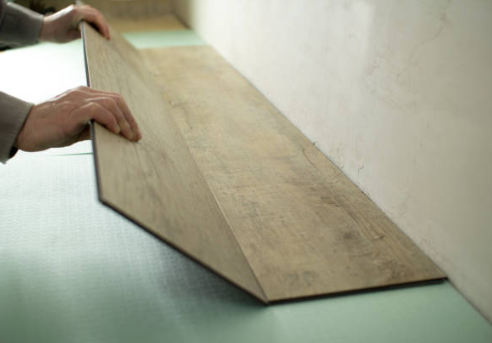Is LVT flooring better than laminate? A Comprehensive Comparison
LVT flooring and laminate are two popular options for homeowners looking for durable and affordable flooring solutions. Both materials offer a range of benefits, but understanding the differences between them is crucial in making an informed decision for your home. In this article, we will compare LVT flooring and laminate across different aspects to determine which option is better suited for your needs.
Durability and Longevity
When it comes to durability, LVT (Luxury Vinyl Tile) flooring takes the lead. LVT is made of multiple layers, including a wear layer that protects against scratches, stains, and wear. This wear layer makes LVT highly resistant to damage from pets, high foot traffic, and moisture. On the other hand, laminate flooring consists of a fiberboard core that is vulnerable to water damage and can swell or warp over time. While laminate can withstand moderate wear and tear, it is not as durable as LVT in the long run.
Appearance and Aesthetics
Both LVT and laminate flooring offer a wide range of designs and styles to suit various aesthetic preferences. LVT flooring is known for its ability to convincingly mimic the look of natural materials like hardwood, stone, or tile. With advanced printing technology, LVT can replicate the texture and patterns found in these materials. On the other hand, laminate flooring also offers realistic wood or tile appearances but may not match the level of authenticity achieved by LVT. However, laminate's appearance can fade over time, especially in areas exposed to direct sunlight.
Maintenance and Cleaning
In terms of maintenance, LVT flooring is relatively low-maintenance compared to laminate. LVT can be easily cleaned with regular sweeping and mopping using mild cleaners. It is also resistant to stains and does not require refinishing or sealing. Laminate flooring, on the other hand, requires more attention and care. It is susceptible to water damage, so it is important to clean up spills immediately. Laminate also requires occasional resealing to maintain its protective layer. Overall, LVT flooring offers a hassle-free cleaning and maintenance experience.
Water Resistance
One of the significant advantages of LVT flooring over laminate is its superior water resistance. LVT is designed to withstand moisture, making it suitable for areas prone to spills, such as kitchens, bathrooms, and basements. Its water resistance properties also make it a popular choice for commercial spaces. Laminate flooring, although it has improved in terms of water resistance over the years, is still more susceptible to water damage and should not be installed in areas with high humidity or potential for water exposure.
Comfort and Sound Absorption
When it comes to comfort underfoot, LVT flooring offers a more cushioned feel compared to laminate. LVT has a softer surface that provides a comfortable walking experience and reduces the strain on joints and feet. Additionally, LVT provides better sound absorption properties, reducing noise transmission and making it a quieter flooring option. Laminate flooring, while still relatively comfortable, has a harder surface that may not be as forgiving for prolonged standing or walking.
Installation and DIY-Friendliness
Both LVT and laminate flooring are popular choices for DIY enthusiasts due to their relatively straightforward installation processes. LVT flooring typically comes in interlocking or glue-down options, allowing for easy installation without the need for specialized tools. Laminate flooring also features a click-lock system that simplifies installation. However, it is worth noting that LVT flooring can be more forgiving when it comes to subfloor imperfections, making it a more DIY-friendly option.
Affordability
When it comes to affordability, laminate flooring tends to be more budget-friendly than LVT flooring. Laminate is generally less expensive per square foot and offers a cost-effective way to achieve the look of hardwood or tile. However, it is important to consider the long-term durability and maintenance costs when making a decision. While LVT flooring may have a higher upfront cost, its superior durability and low maintenance requirements can result in long-term savings.
Eco-Friendliness
If eco-friendliness is a priority for you, LVT flooring has a slight advantage over laminate. LVT flooring is often made from recycled materials and is recyclable itself, making it a more sustainable option. Laminate flooring, while it can be made with some recycled content, is primarily composed of wood fibers and synthetic materials, which may have a higher environmental impact.
Installation Areas
Both LVT and laminate flooring can be installed in various areas of your home. However, due to LVT's superior water resistance, it is better suited for areas prone to moisture, such as bathrooms, kitchens, and basements. Laminate flooring is better suited for dry areas like living rooms, bedrooms, and hallways. Consider the specific requirements of each room before making a decision.
Conclusion
After comparing LVT flooring and laminate across different aspects, it is clear that LVT flooring has several advantages over laminate. LVT offers superior durability, water resistance, ease of maintenance, and a more realistic appearance. While laminate flooring may be more budget-friendly, it falls short in terms of long-term durability and resistance to water damage. Ultimately, the choice between LVT and laminate flooring depends on your specific needs, budget, and the areas where you plan to install the flooring.

